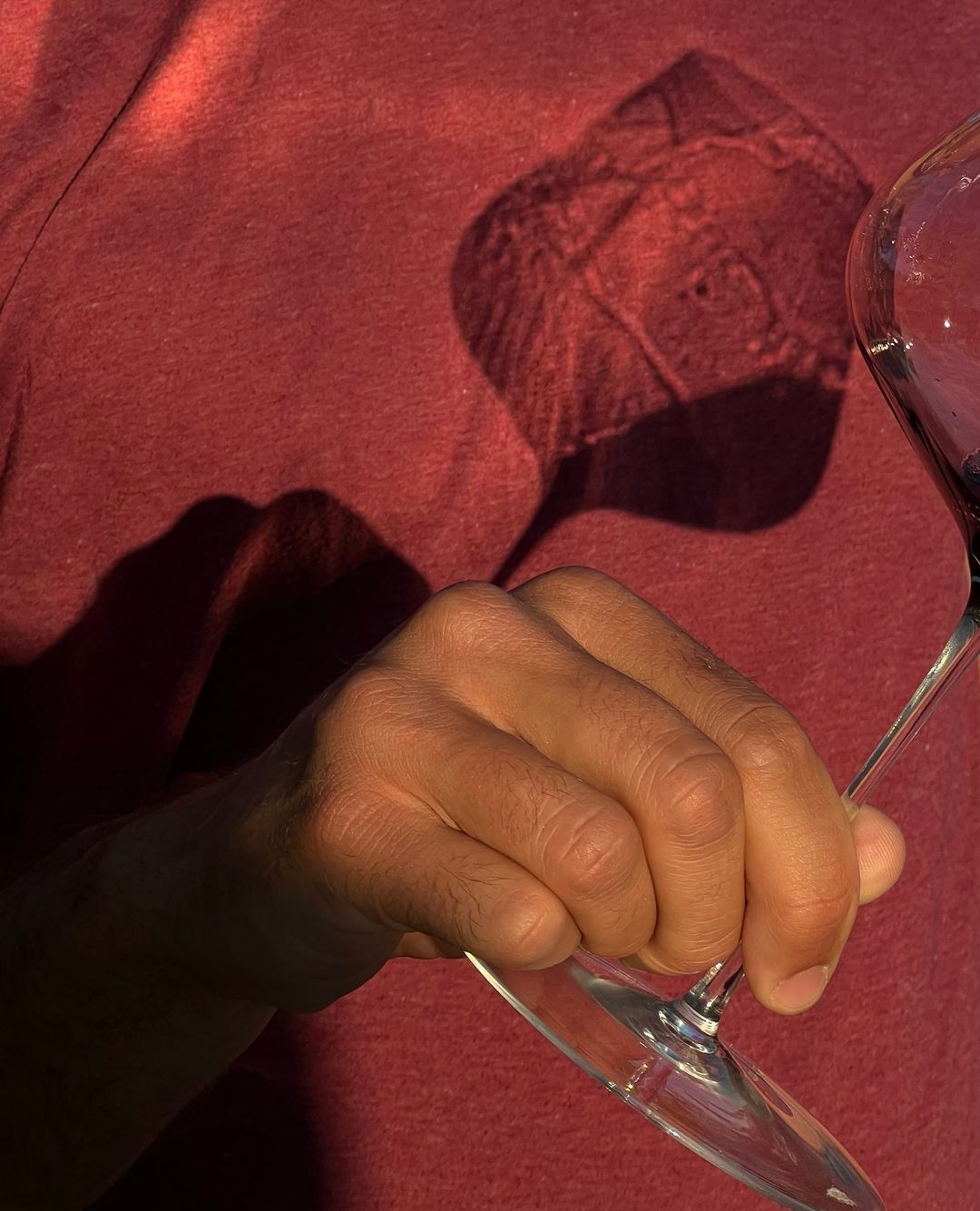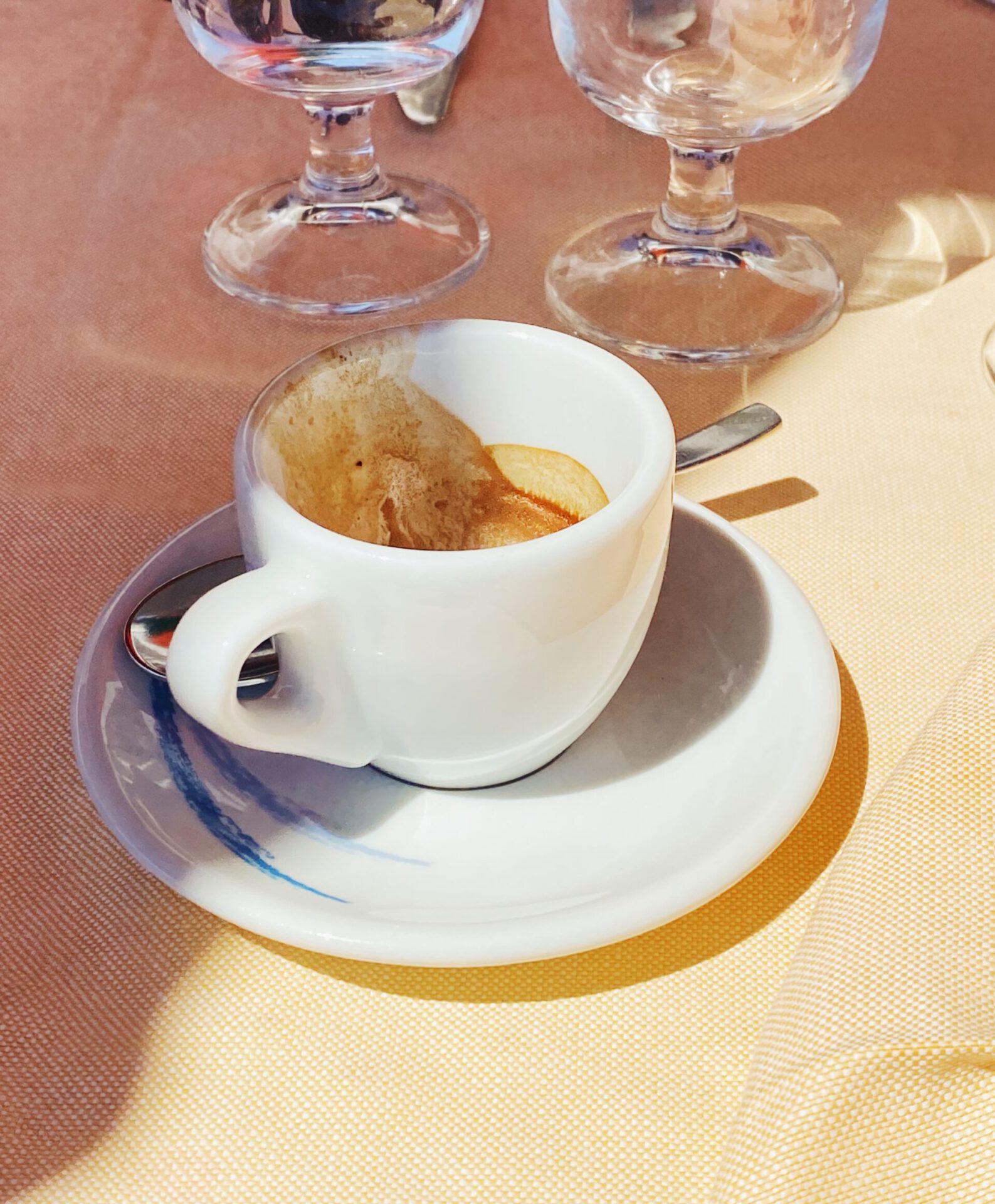Picture this: you’re sat at dinner in the Tuscan hills, the sun slowly sinking below the horizon, your glass filled with Chianti Classico. Laughter spills into the air as someone swirls their wine, inhales dramatically, and—after a long, knowing pause—declares, “Ah yes, unmistakably oaky,” like they’ve just cracked the Da Vinci Code.
And yet when that meal ends, those very same connoisseurs will unceremoniously swig back their espressos in one gulp—no florid language this time. But, little do they know, coffee demands an even sharper palate than wine. A study from Aarhus University found that while wine has around 800 aromatic compounds, coffee boasts 1,000. Aldehydes, esters, and pyrazines—though hardly appetizing by name—shape everything from fruity brightness to delicate florals in every cup.
Wine holds a prestigious place in Italy, and most Italians, from a young age, are at least somewhat well-versed in it. Coffee, despite being the country’s second most consumed beverage (after water, thankfully), doesn’t get the same treatment.
Why is wine so meticulously dissected while coffee, though far more ubiquitous, is not? Perhaps it’s history—Italy has been making wine for thousands of years, and vineyards are a large part of the country’s landscape and culture, whereas coffee, imported from South America, Africa, and Asia only became widespread with the invention of the espresso machine in the late 19th century. Maybe it’s about choice: menus list endless wines but usually just one type of coffee. Or maybe it comes down to price—espresso, considered a daily necessity, is regulated and hovers around €1.10, while wine seems to have no ceiling, with some bottles fetching thousands of euros.
Wine sommeliers train for years to refine their palates, and learning to truly taste coffee follows a similar path. But even as a beginner, you can start to distinguish roasts, origins, and brewing methods—and to tell the difference between a great cup and a mediocre one.
Let’s begin with the two main coffee bean varieties before diving into the trinity of appearance, taste, and aroma. Next time you’re perched at the bancone (counter) of your local bar, keep these factors in mind.

ARABICA VS. ROBUSTA
Contrary to popular belief, Robusta—most common in Italian bars for its competitive price and full-bodied taste—is not inherently “worse” than Arabica. Its lower price often associates it with lower quality, and its flavor profile—earthy, nutty, and sometimes woody—may offer a less “complex” experience than Arabica, which boasts a broader spectrum of fruity, floral, and chocolatey undertones. With a higher caffeine content, Robusta delivers a stronger, more pronounced bitterness that can sometimes overshadow delicate nuances.
Robusta’s cultivation and processing play a role in shaping this flavor. More resilient than Arabica, the Robusta plant thrives in lower altitudes and harsher climates—conditions that may hinder flavor development. (This hardiness also makes it a focus of research, especially as climate change poses a growing threat to the more delicate Arabica plant.)
That being said, flavor perception is subjective. While Arabica is often prized for its complexity, many coffee lovers appreciate the boldness and strength of Robusta, finding beauty in its simplicity.
Here, again, coffee and wine share a parallel: just as not all Barbera, Sangiovese, or Vermentino wines taste the same despite coming from the same grape variety, neither do all Arabica or Robusta coffees.
Though, to draw a broad comparison, Arabica coffee could be likened to a lighter, more delicate wine like Pinot Grigio or Vermentino—bright, crisp, and layered with subtle fruit and floral notes. Robusta, on the other hand, aligns with bolder, full-bodied wines like Chianti or Nero d’Avola, offering rich, intense flavors with deep notes of dark fruit and spice.
APPEARANCE
The first thing you notice when an espresso lands in front of you is its appearance—the most immediate clue to its quality. A quick glance can reveal details about the beans, the roast, and the skill behind the brew.
The crown jewel of a well-made espresso is its crema, the velvety layer of foam on top. As you lift the cup, pay attention to its texture, color, and bubbles. A rich, consistent crema with fine, even bubbles signals quality beans, precise roasting, and expert extraction. A darker, thicker crema often suggests a higher percentage of Robusta, i.e. a bolder flavor. However, if the crema is excessively thick and dark, it may indicate over-roasting, poor extraction, or machine maintenance issues.
For a closer look, grab a spoon. Gently push the crema from the center toward the edges and observe its movement. A well-balanced extraction creates an elastic crema that gracefully flows back to the center, a sign of balance among time, temperature, and pressure. If the crema stays rigid and unyielding, it could point to poor extraction, an overly dark roast, or too much Robusta in the blend.

AROMA
Next comes aroma. Walk into an Italian coffee bar, and it should smell warm and roasty, never burnt. If the air reeks of scorched beans, chances are the coffee will taste just as harsh.
Aroma is personal, shaped by various factors, but take a moment to give your espresso a proper whiff. Is it earthy with a floral hint? Fruity with a touch of citrus? Over time, you’ll build a scent memory, guiding you toward the flavors you love most.
For those looking to refine their palate, a coffee aroma wheel can help navigate the 1,000+ distinct scents, broadly categorized into fruity, floral, earthy, and nutty notes.
TASTE
The final—and most telling—step: taste. Before reaching for the sugar, take a moment to appreciate the pure essence of the brew. No judgment if you sweeten it, but tasting coffee in its unadulterated form allows you to fully evaluate its quality. A truly exceptional cup should be balanced enough to make added sugar unnecessary. (This can also go the other way, as sugar can mask a subpar coffee.)
As you take a sip, notice the different sensations on your tongue. The sides may pick up a pleasant acidity, balanced by a subtle bitterness at the back. A delicate sweetness might emerge at the front. There’s no universal right profile—again, it’s about personal preference—but balance is key. Be wary of an overly drying or puckering sensation, as astringency can indicate over-extraction or lower-quality beans.
Last but not least, don’t forget about temperature. Have you ever wondered why your morning Moka tastes so much worse when you go back to it in the afternoon?
Here’s why: as coffee sits, exposure to air causes oxidation, dulling its flavors and creating stale notes. As it cools, tannins concentrate, making bitterness more pronounced while acidity fades.
To fully appreciate all the nuances of your brew, prioritize tasting it promptly rather than chit-chatting with your dear barista.
As you sip your next espresso—and please, resist the urge to down it like a shot—take a moment to really see, sniff, and savor. Because once you start training your palate, you’ll realize there’s a whole complex universe beyond the bancone—one that rivals, if not surpasses, that of wine.




